There can be your advertisement
300x150
How to Choose a Kitchen Backsplash: Designer Shares Insights
A professional explained when to order, which grout to choose, and which backsplash will last the longest
Many of us have already encountered or will encounter the challenging task of choosing a kitchen backsplash. How to make a thoughtful choice that fits into the interior and remains relevant for many years? Let's explore. But first, let's consider the question of when to choose a backsplash and when to install it: before or after the kitchen cabinet installation?
Andrey Bubnov, Interior Designer, Studio Decart Design Founder
When to Choose a Backsplash
Surprisingly, the answer here is simple and clear: a backsplash should be chosen simultaneously with kitchen planning and countertop selection. These are all elements of one whole, and the main task is not only to ensure that the backsplash and countertop are practical, but they should also complement the kitchen furniture.
It is better to install the backsplash, just like the countertop, after the kitchen cabinet installation, as this allows for precise fitting down to the millimeter and avoids unnecessary tile cuts. The exception is if the backsplash is part of wall finishing, or it covers a large area, or it is made from decorative plaster and the lower cabinet lacks a back panel (as in our project).
 Design: Andrey Bubnov
Design: Andrey BubnovBacksplash Finishing Options
There are many options for backsplash finishing. I will highlight only those that look stylish and blend well into the interior.
The main options are ceramic tile, natural or artificial stone, and decorative plaster. The most practical and versatile material for backsplash finishing is ceramic granite and ceramic tile. Currently, large-format ceramic granite is a major trend in finishing.
The popular in recent years tile style "metro" ("bunny") in the form of octagons is no longer relevant and is fading into the past. The same applies to equilateral mosaic, but rectangular tiles are still relevant.
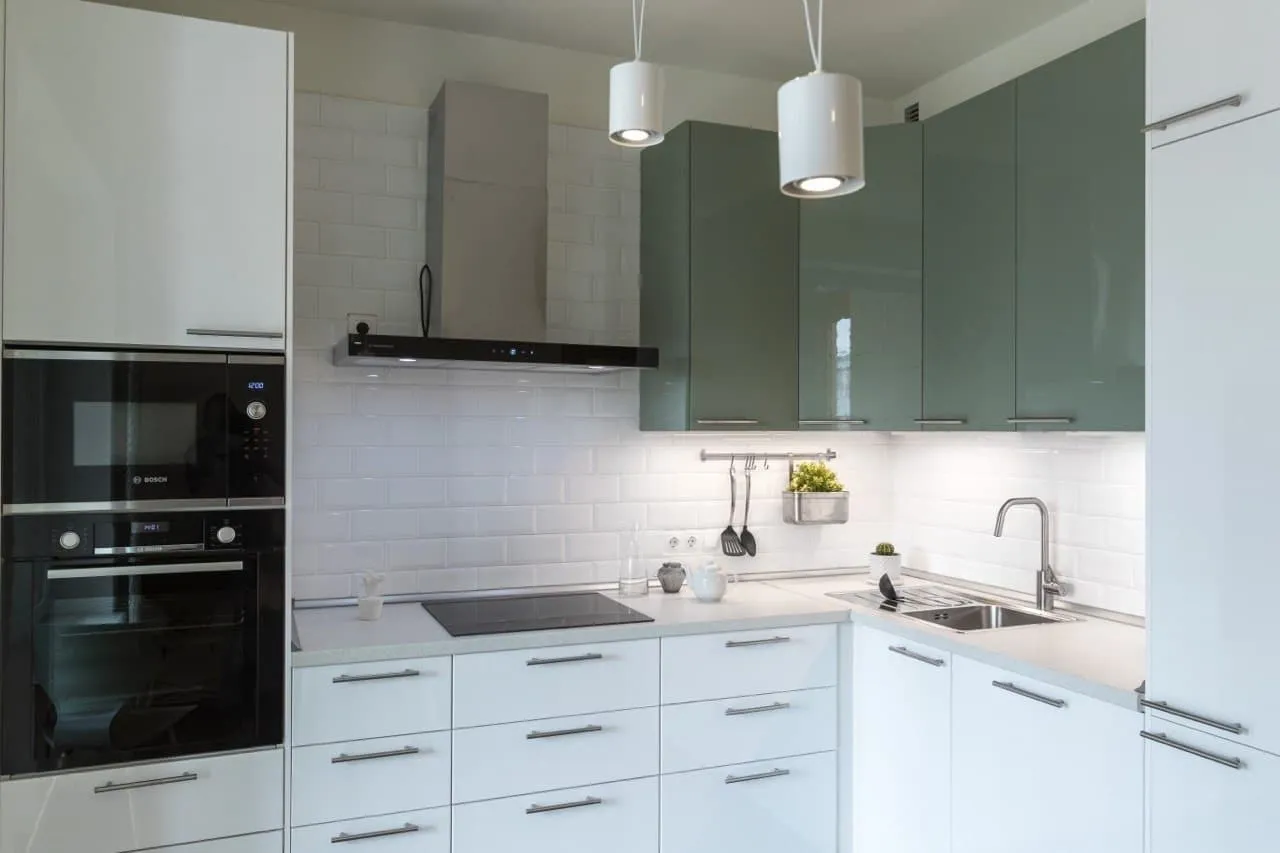 Design: Andrey Bubnov
Design: Andrey BubnovHow to Choose Grout
When selecting, one must consider the downside of a backsplash made from ceramic tile — the joints between tiles. Dirt and grease can seep into these joints and get absorbed by the grout, making it hard to clean. Partially mitigated by two-component epoxy grout.
If choosing large-format ceramic granite, the issue of joints is resolved. There is now a trend to use large-format ceramic granite not only for backsplashes but also for countertops and kitchen cabinet fronts. This looks stylish and practical to use.
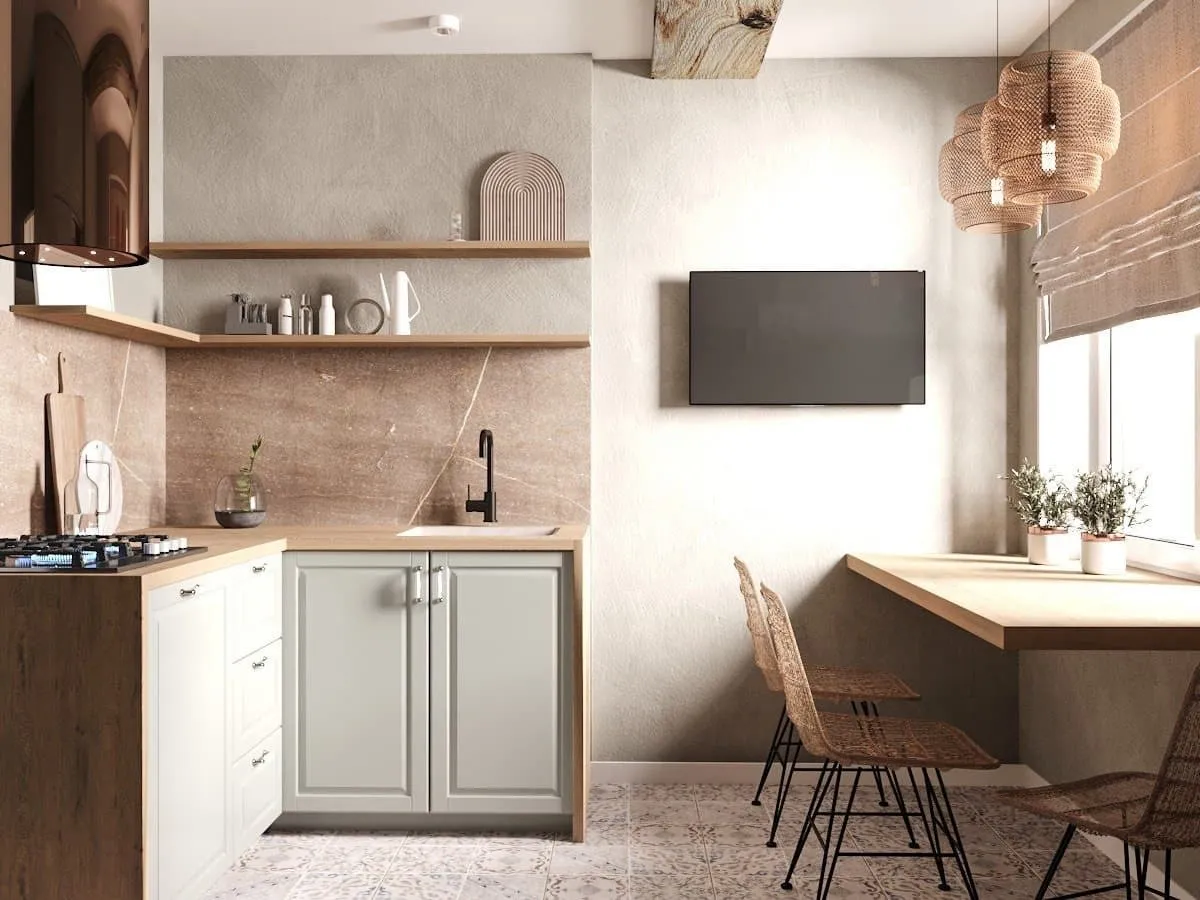 Design: Andrey Bubnov
Design: Andrey BubnovDecorative Plaster on Backsplash
Decorative plaster is probably the most affordable yet stylish option for kitchen backsplash finishing. However, it should only be used with micro-cement-based plaster, as this material is water-resistant and wear-resistant. Additionally, it should be treated with a special matte varnish that adds extra protection to the surface and allows for cleaning even with a metal brush.
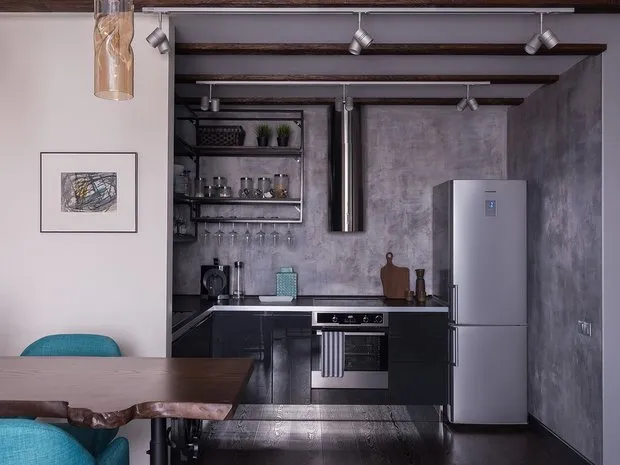 Design: 'Cozy Apartment'
Design: 'Cozy Apartment'Backsplash Made from Tempered Glass
I would recommend using only monochromatic material, without any patterns or designs. It looks especially effective when paired with hidden backlighting. A drawback of this material is that any streaks, spots, splashes, or grease are clearly visible on it.
Natural stone, acrylic stone, or quartz agglomerate are flawless solutions for kitchen backsplash finishing. This surface is universal in every sense, has no joints, can be the same material as the countertop, shows no streaks, is easy to clean and maintain, and looks stylish and flawless. The only downside is the high cost.
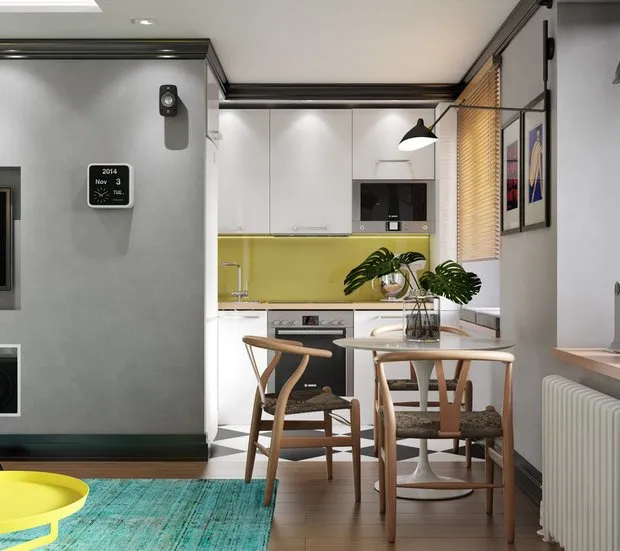 Design: Galina Arabskaya
Design: Galina ArabskayaBacksplash as Storage Space
There is another backsplash option that is gaining popularity each year. This is using the backsplash as additional storage space. Shelves are often built into the backsplash, sometimes covered with a sliding or motorized panel.
The depth of these shelves is typically 15 cm. If you want such a design, you need to plan and install the kitchen cabinet accordingly so that the cabinet is pulled away from the wall, increasing the depth of the lower cabinets.
Cover Design: Julia Murugina
More articles:
 Green Apartment Decoration from IKEA: 10 Cool Items
Green Apartment Decoration from IKEA: 10 Cool Items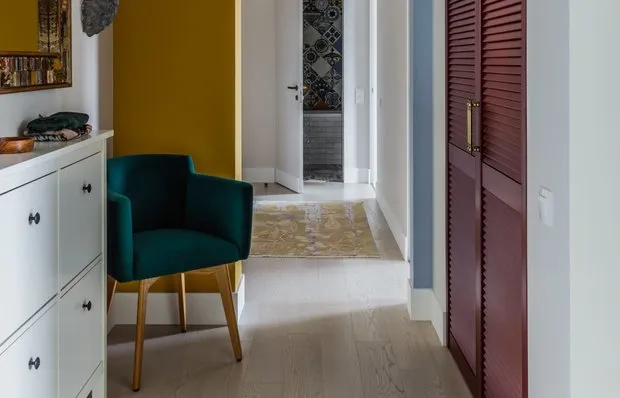 How to Transform a Micro-Hallway: 7 Great Ideas from Designers
How to Transform a Micro-Hallway: 7 Great Ideas from Designers Top-5 Tiny Kitchens in Khrushchyovkas with IKEA Furniture
Top-5 Tiny Kitchens in Khrushchyovkas with IKEA Furniture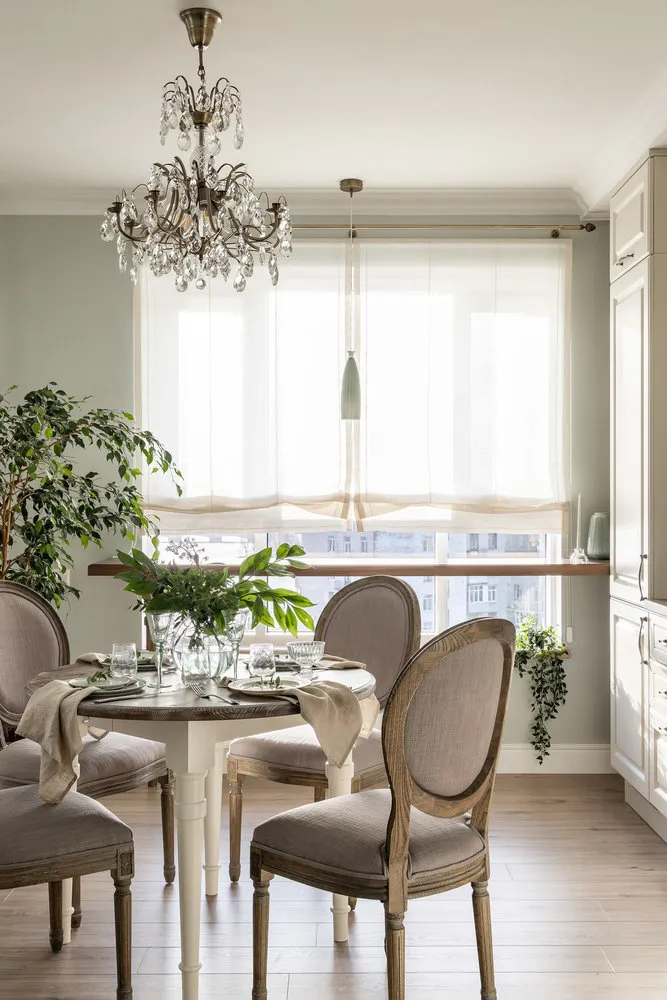 Unusual Solutions: 11 Cool Design Hacks from Our Projects
Unusual Solutions: 11 Cool Design Hacks from Our Projects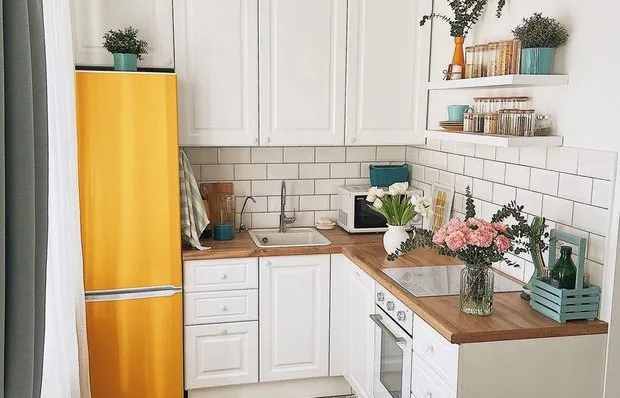 How We Transformed a 6 sq m Dead Micro-Kitchen in a Brezhnev-Era Apartment (Photos Before and After + Prices)
How We Transformed a 6 sq m Dead Micro-Kitchen in a Brezhnev-Era Apartment (Photos Before and After + Prices) 6 Cool Bloggers' Kitchens That You Can Admire Forever
6 Cool Bloggers' Kitchens That You Can Admire Forever Smart renovation of a 29 sqm micro-apartment for 900 thousand rubles
Smart renovation of a 29 sqm micro-apartment for 900 thousand rubles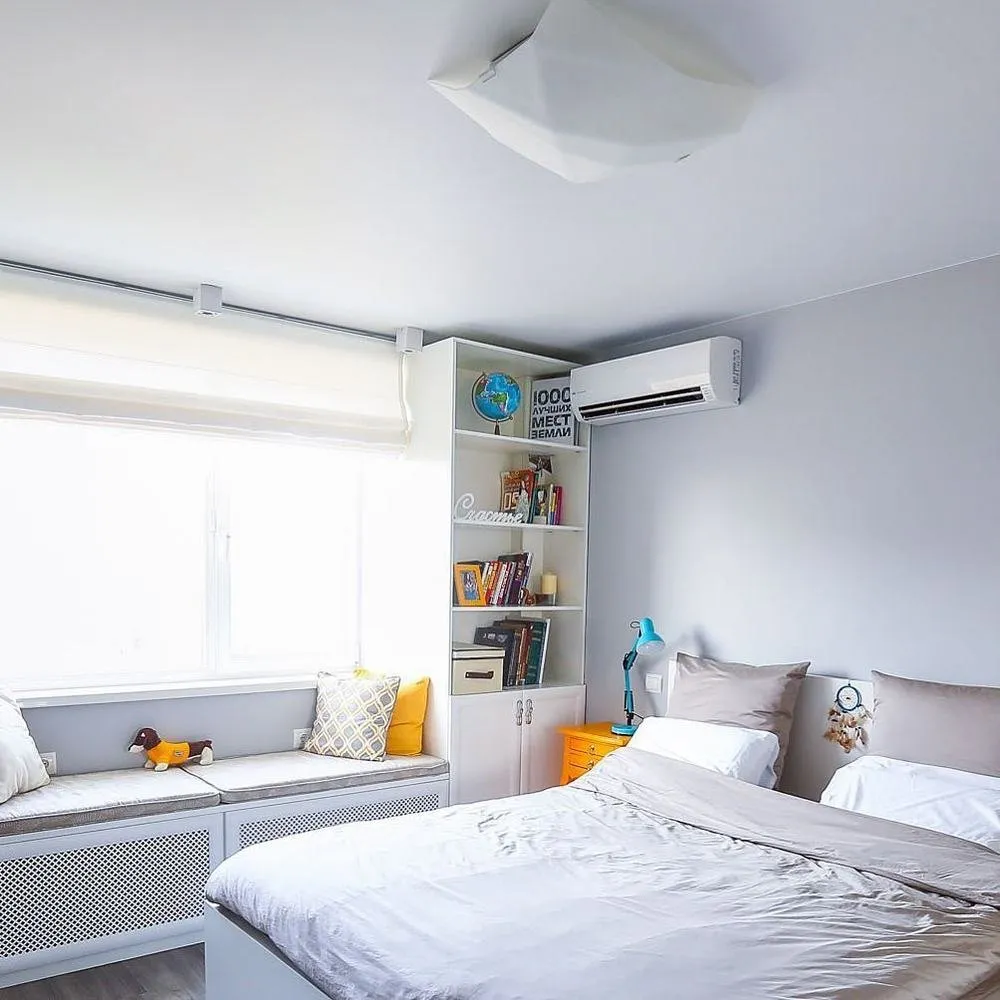 Cozy Scandinavian bedroom 15 m² with thought-out storage systems
Cozy Scandinavian bedroom 15 m² with thought-out storage systems